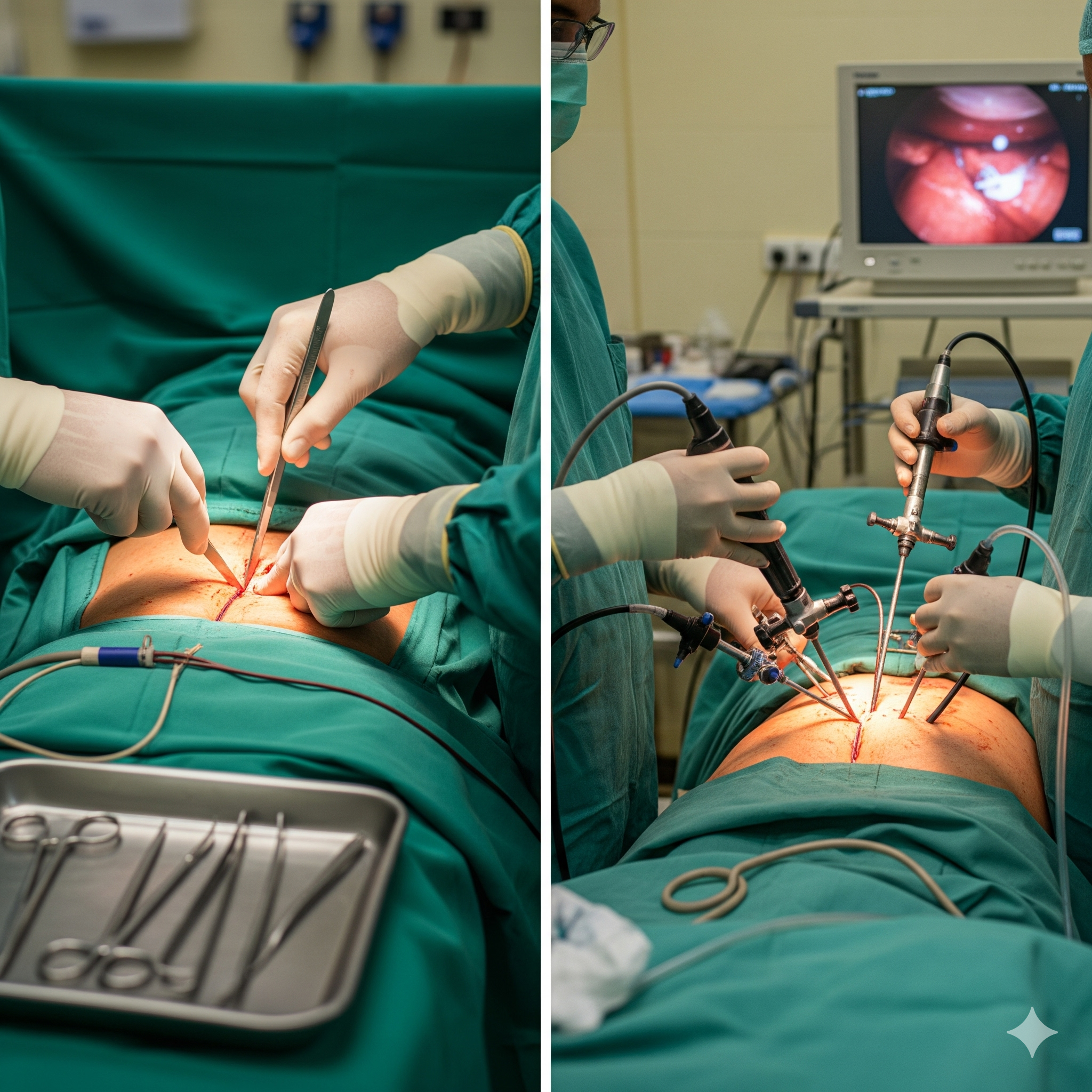Scalpel vs. Scope: Comparing Outcomes of Open and Laparoscopic Appendectomy in Resource-Limited Hospitals
Davide Rinaldi¹, Grace Davies², Andreas Georgiou³
Keywords:
Appendectomy, Laparoscopy, Open Surgery, Surgical Outcomes, Resource-Limited HospitalsAbstract
Background: Appendectomy remains one of the most frequently performed emergency surgeries worldwide. In high-resource settings, laparoscopic appendectomy is considered the gold standard due to reduced postoperative pain, shorter hospital stay, and lower infection rates. However, its adoption in resource-limited hospitals is hindered by concerns about cost, availability of equipment, and surgical expertise. Understanding the comparative outcomes of open versus laparoscopic appendectomy in such environments is essential for guiding policy and training.
Objective: To compare postoperative outcomes between open and laparoscopic appendectomy in resource-limited hospital settings.
Methods: A prospective multicenter study was conducted in three regional hospitals in Sudan between March 2022 and February 2024. A total of 640 patients diagnosed with acute appendicitis were included, of whom 358 underwent open appendectomy and 282 laparoscopic appendectomy. Data collected included operative time, length of hospital stay, wound infection rates, and readmissions within 30 days. Statistical analysis was performed using chi-square and logistic regression.
Results: The laparoscopic group demonstrated significantly lower wound infection rates (6.1% vs. 14.9%, p < 0.01), reduced mean length of hospital stay (2.4 ± 0.7 vs. 4.1 ± 1.2 days, p < 0.001), and lower postoperative pain scores at 24 hours (mean 3.1 vs. 5.7, p < 0.001). Operative time was slightly longer in the laparoscopic group (68 vs. 59 minutes, p = 0.04). Readmission rates were lower among laparoscopic patients (3.2% vs. 7.5%, p < 0.05).
Conclusion: Laparoscopic appendectomy provides superior postoperative outcomes compared to open surgery, even in resource-limited hospitals, though with modestly increased operative time. Scaling up laparoscopic capacity through equipment investment and surgeon training could significantly improve surgical outcomes in low-resource settings.
Downloads





